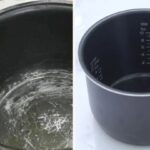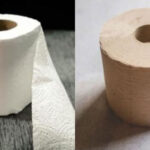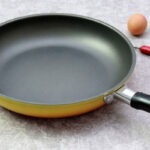It is true that with extended use, the non-stick coating of a pan will degrade, especially in the center. So, is it safe to continue using a non-stick pan that is starting to peel? If so, how can we maintain the non-stick surface without compromising health and safety?
Understanding Non-Stick Coatings and Precautions for Use
According to Professor Pham Van Khoi of the Institute of Chemistry of Vietnam, as cited in Tri Thức, the interior of non-stick pans is coated with a high-molecular-weight compound, specifically polytetrafluoroethylene (PTFE), commonly known as Teflon.
This Teflon coating creates surface tension, preventing food and oil from adhering to the pan’s surface. It facilitates easy cleaning, saves time, and reduces the amount of oil required during cooking.
Professor Khoi reassures that Teflon is challenging to absorb, even if ingested, and the body will naturally eliminate it. Therefore, there is no need for concern about Teflon accumulation and associated health risks.
PGS.TS Nguyen Duy Thinh, former lecturer at the Institute of Biotechnology and Food Technology, Hanoi University of Science and Technology, explains that the typical cooking temperature for a non-stick pan is below 260 degrees Celsius, which does not affect the structure of Teflon.
However, if your non-stick pan’s coating has started to peel, Thinh recommends thoroughly cleaning the pan to remove any remaining coating. This can be done using a cleaning agent and a scouring pad or steel wool to ensure no coating fragments remain, preventing them from ending up in your food.
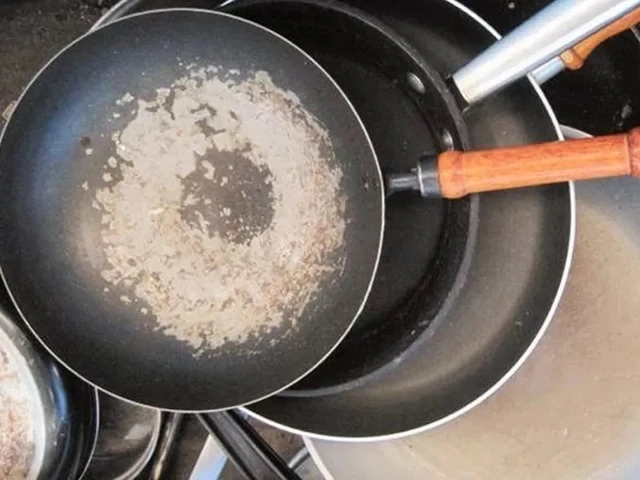
Non-stick pans inevitably experience coating wear and tear over time. Image: Gridtechno.
If your pan’s non-stick performance has diminished but the coating is mostly intact, you can try the following tips to restore its effectiveness and extend its lifespan:
Fat and Ginger
After cleaning your non-stick pan, add a small amount of fat or lard and heat it until it melts. If you don’t have access to fat, you can purchase leaf lard and fry it. Then, pour the melted fat into a bowl, leaving a small amount in the pan. Take a knob of ginger, peel it, and cut it in half. Lightly crush or bruise the cut end with a knife.
Rub the cut end of the ginger onto the pan’s surface, focusing on the areas with the most wear. Repeat this process several times, and then wash the pan clean. The hot fat penetrates the pan’s surface, and the compounds in the ginger create a natural non-stick layer. This makes it easy to fry sticky foods like pancakes, tofu, and fish.
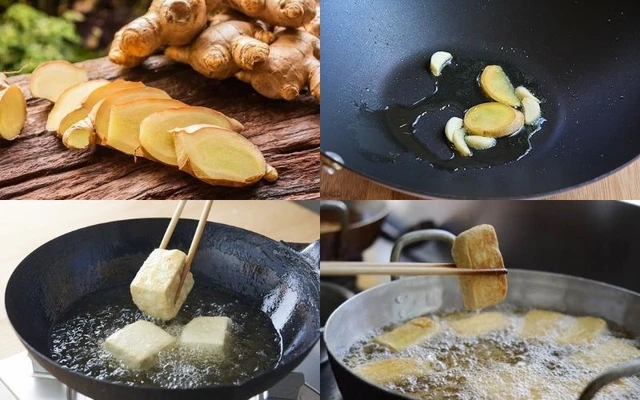
The combination of hot fat and ginger creates a natural non-stick surface.
Milk
Milk is a common household item, especially in homes with young children. Apart from being a nutritious beverage, milk can also help rejuvenate non-stick pans. Milk contains a protein called Casein, which, when heated, forms a coating on the pan’s surface, restoring its non-stick properties. This method is suitable for pans with moderate coating wear but may not be effective for heavily peeled pans.
Potato and Salt
Cut a potato in half lengthwise and dip the cut side into salt. Use this salted potato to scrub the affected areas of the pan. Potatoes contain natural oxalic acid, which can dissolve rust and, when combined with salt, effectively remove burnt residue.
Baking Soda
Create a solution by mixing baking soda with water, then bring it to a boil in your non-stick pan. The burnt residue will loosen, making it easier to clean. Alternatively, you can boil a mixture of water, vinegar, and baking soda, let it cool, and then use it to clean the pan with a soft sponge.
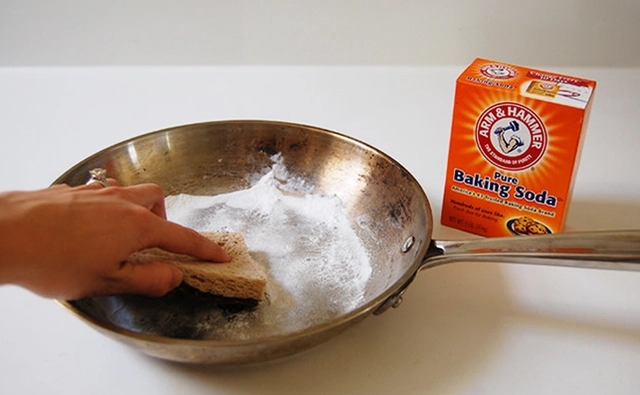
Baking soda is an effective cleaning agent for non-stick pans.
When working with this solution, exercise caution as the boiling mixture releases vapors and bubbles vigorously.
Tomato Sauce
Tomato sauce is not only a popular condiment but also a powerful cleaning agent. If your non-stick pan has stubborn stains, pour a small amount of tomato sauce into the pan and let it sit for about 20 minutes. The acid in the sauce will break down the stains.
Afterward, wipe the pan with a soft cloth, and the stains should come off along with the sauce. Finally, wash the pan with dish soap and water to restore its shine.
Source: GĐXH

























